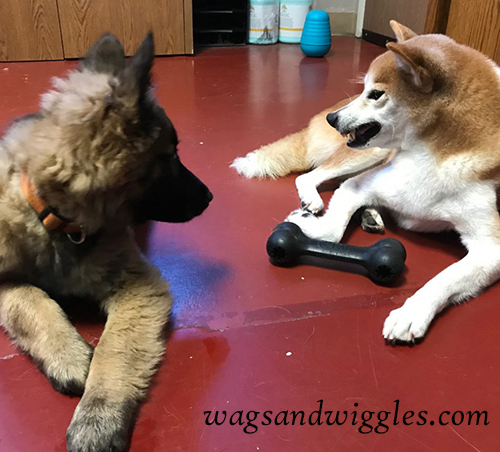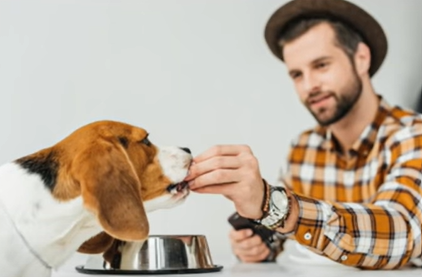Resource Guarding

A NOTE FROM THE WOLVES
Resource guarding is natrual with Wolves. They will resource guard food, but it is done differently. Where dogs may fight each other over a resource, once the wolf gets the food it leaves they is left alone.
The resource-guarding dogs exhibit is an escalation of what wolves do.
What is resource guarding in dogs?
Resource guarding in dogs refers to behaviors that protect valuable resources from being taken away by others, including humans or other animals. This behavior is rooted in the instinct to survive by safeguarding essential resources such as food, water, shelter, and mates. When dogs guard their resources, they may display a range of behaviors from mild to severe to prevent others from approaching or taking these items. Here are some examples of resource guarding:
Toy Guarding: Resource guarding in dogs refers to behaviors that protect valuable resources from being taken away by others, including humans or other animals. This behavior is rooted in the instinct to survive by safeguarding essential resources such as food, water, shelter, and mates. When dogs guard their resources, they may display a range of behaviors from mild to severe to prevent others from approaching or taking these items. Here are some examples of resource guarding:
Food Guarding: A common form of resource guarding is when a dog becomes protective over their food bowl. If someone approaches while they’re eating, the dog might freeze, growl, or snap to warn them away. This can happen with their regular meals, treats, or bones.
Toy Guarding: Dogs may also guard toys or chew items they consider valuable. They may pick up the toy and move away, growl if someone reaches for it, or even show aggressive behaviors to keep others at a distance.
Space Guarding: Some dogs guard their resting places, such as a bed, crate, or a favorite spot on the couch. They may bark, growl, or snap when someone approaches their guarded space, especially when lying down or sleeping.
Guarding Owners: Dogs can show resource-guarding behavior towards humans, often guarding a specific family member against other people or pets in the household. They might position themselves between the person and the perceived threat or exhibit aggressive behaviors when others come too close.
Guarding Stolen Items: Dogs sometimes guard items they’ve stolen, such as food from the counter, socks, or other household objects. Even if the item is not typically of high value to them, stealing and possessing it can trigger guarding behavior.
.

Hand feeding a dog with the bowl in viewing distance can be a helpful technique for beginners. It allows you to establish trust and create a positive association with mealtime. With this method, you can gradually transition to using a bowl while ensuring your dog feels comfortable and secure. By following this approach, you can improve your bond with your furry friend and make mealtime a enjoyable experience for both of you.
Links
How To Fix Resource Guarding
To address resource guarding in dogs, which is when they protect their food, toys, or other objects aggressively, here are three practical solutions:
- Trade-Up Game:
What It Is: This involves offering your dog a better item in exchange for what they’re guarding. For example, you offer them a tasty treat if they have a toy.
Why It Works: It teaches your dog that giving up something can lead to getting something even better, reducing their need to guard.
- Desensitization:
What It Is: Gradually get your dog used to you being near them while they’re eating or playing with a toy. Start by standing at a distance where your dog is comfortable, then gradually decrease this distance over time.
Why It Works: It helps your dog understand that your presence is not a threat to their resources, making them less likely to feel the need to guard them.
- Obedience Training:
What It Is: Teaching your dog commands like “leave it” or “drop it.” These commands can be used to manage their behavior when showing signs of resource guarding.
Why It Works: It gives you control over potentially dangerous situations and helps your dog learn to trust your commands, knowing that following them can lead to positive outcomes (like treats or praise).
Remember, patience and consistency are key when addressing resource guarding. If the behavior is severe or doesn’t improve with these methods, consulting a professional dog trainer or behaviorist is recommended.
4. Severe Guarding – Using Medication
What It Is: Some dogs do not respond to standard methods and will continue to resource guard under all conditions. There are times when SSRIs (Selective Serotonin Reuptake Inhibitors) are the answer.
Why It Works: It increases the level of serotonin concentration in the brain. Serotonin is the hormone that makes you feel more confident and happier.

0 Comments